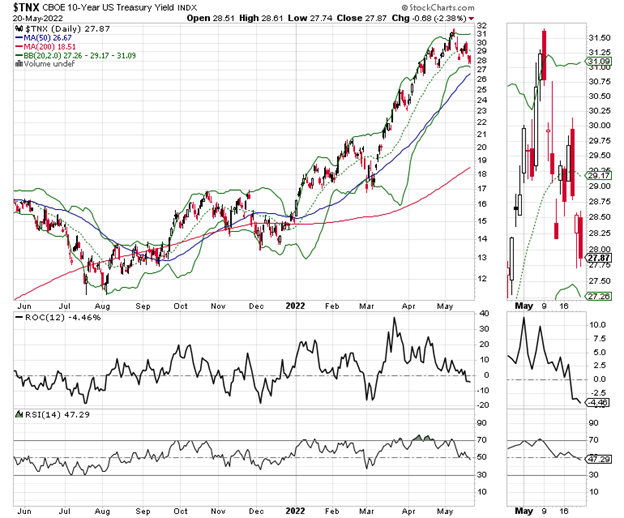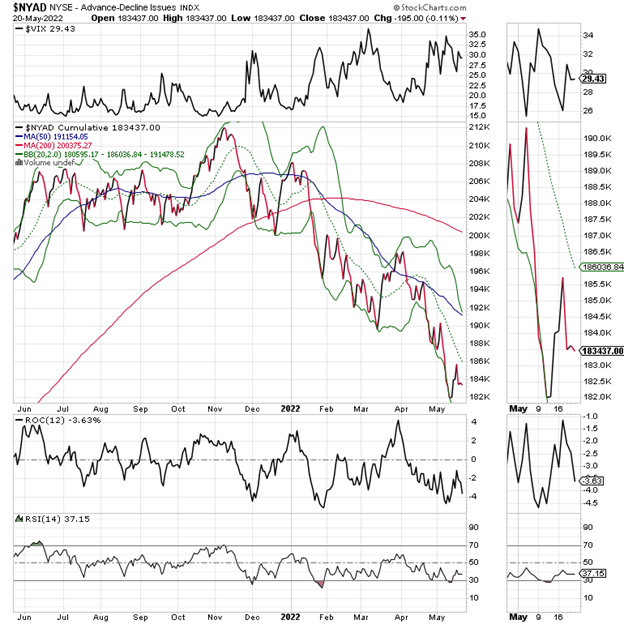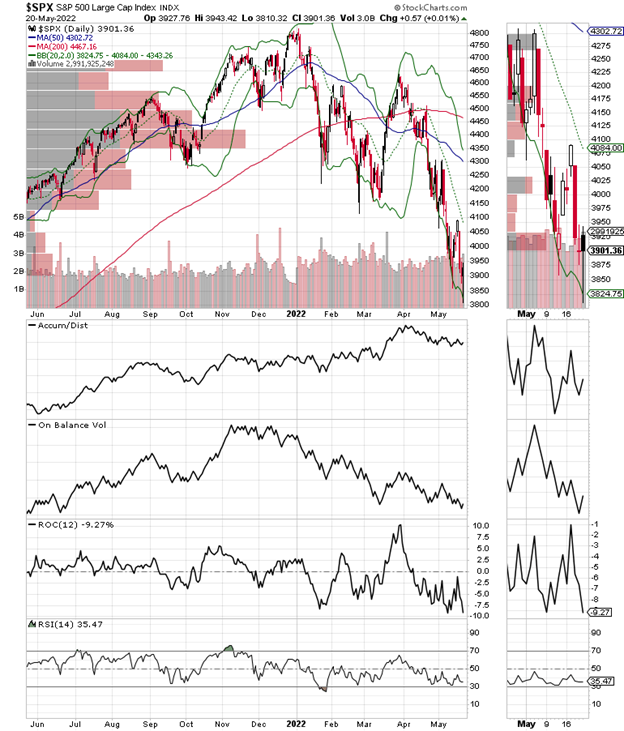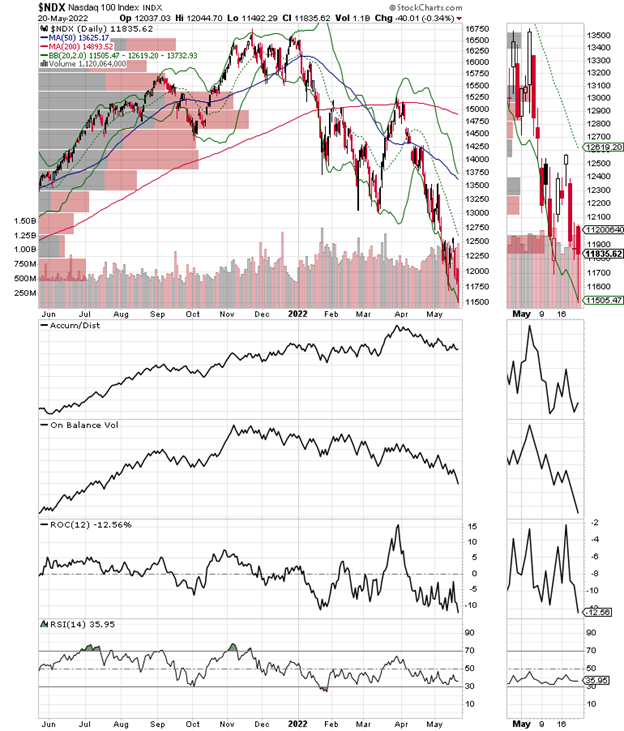When the current bear market is over, I expect we will see a whole new set of opportunities to make money, observes Joe Duarte, editor of In the Money Options.
But for now, patience and vigilance remain the key to success.
Knowledge is Power
You know you’re in a bear market when China cuts a major interest rate and the US market responds with a paltry bounce and a continuation of its recent sell-off. But that’s where we are. And what it means is that the stock market has finally realized that the Federal Reserve is playing a dangerous game of chicken with the MELA system. And by the time the game plays out, a lot more damage may be done to the US economy, than anyone especially the central bank may be expecting.
In addition, as I describe below, bond yields are quietly rolling over; a sign that savvy traders are already betting on a slowing economy.
On the bright side—because news travels fast these days, if and when the Fed reverses course, the odds will favor a rapid and perhaps historically significant rebound in stocks.
All of this means that serious investors should be compiling a shopping list.
Out of Step with the Times
The fact is that the Federal Reserve, the US government, major banks, and the general public are basing their expectations on the future of the economy works based on the pre-Covid/20th-century pace of macro trend development—what I call the traditional pace.
For example, in the past, the economy would slow down and the stock market would follow. That’s because in the past, the stock market tended to reflect the activity in the economy. And thus, a slowing economy would lead to lower corporate earnings and thus stock prices would fall in order to adjust for the expected reduction in corporate earnings. And in some ways, it still works in that fashion—sort of.
Here is the crucial difference. As my MELA system (M=Markets, E=the Economy, L= life decisions, and A= artificial intelligence) clearly illustrates, things have changed. The truth is that the markets now fuel the economy, which is why the economic slowdown may already be underway, even as the Fed, the money houses, and the general public fail to recognize it. Moreover, because MELA is a complex system, it will continue to operate in a way that seeks successful outcomes and emergence toward a higher level of operation. This, of course, means that change is inevitable. In other words, even when all of this is finally sorted out, I suspect it will all be much different than anyone can imagine.
MELA Decline Gathers Steam
Last week in this space, I noted that the stocks of used car dealers Carvana (CVNA) and Vroom (VRM) had fallen as sales were plummeting, on top of the fact that management had made some bad decisions along the way.
I also noted that I expected a rise in layoffs and a rapid acceleration of the correction in MELA. Now, during the week that ended May 20, 2022—we saw the following:
- Walmart (WMT), Cisco Systems (CSCO), and Target (TGT) crashed on poor earnings and outlook.
- Jobless claims are showing signs of rising.
- The Fed continues to talk tough about raising interest rates.
Perhaps what is most surprising to the casual and perhaps those investors who have not dialed into the new way things work due to MELA, is the speed and the degree to which markets react. Note the 1000 plus down day on the Dow Jones Industrial Average (INDU) on 5/18/22.
Of course, things will happen at the speed of light because of the influence of Artificial Intelligence (algos) which disseminate the news and trade the largest portion of stocks and options, thus influencing the markets. Finally, remember that when the markets fall, the economy will falter. That’s because the markets, through their influence on 401 (k) plans, IRAs, trading accounts, and cryptocurrency holdings affect spending patterns which in turn will slow the economy. As a result, investors should remain vigilant for both an acceleration of the downdraft in stocks and what could be a sudden and decisive reversal when the Fed signals that it will once again lower rates and restarts its QE exercise.
Therefore:
- Expect volatility to continue.
- Stay vigilant—a move above 35 on the COBE Volatility Index (VIX) index and new lows on NYAD will likely signal that even more aggressive selling is likely.
- Keep a close eye on your sell stops—if a stock you own is not stopped out keep it.
- Trade the long side when opportunities present.
- Stay hedged as long as required by market conditions.
- Prepare to be at 100% cash at some point in the future if the bear trend goes on long enough.
As stocks continue to fall bond yields are following suit. That’s because the bond market is confirming the stock market’s assessment of the current economic situation—a possible recession. Now here’s what’s interesting, the major banks, who are still living in the past, are pricing in a recession in 2023. But, as we’ve already seen, we’ve already had one quarter of contracting GDP.
In other words, if the current quarter delivers a negative GDP number, then by definition—two consecutive quarters of GDP contraction—we will be in a recession.

So, here is the bottom line with regard to bond yields. If TNX breaks below 2.75%, expect a potential cascade of events, such as a possible stock rally and an eventual reversal in Fed policy, which would likely juice stock prices higher.
VIX Rolls Over as NYAD Flattens Out
There may be a temporary pause in the selling in the next few days. But, there doesn’t seem to be enough panic in the market to suggest that stocks will turn up for an extended period of time. However, it is plausible that we may see shares bounce around recent levels for some time as the market digests its recent decline.
Indeed, the New York Stock Exchange Advance Decline line’s (NYAD) ended last week flat, while the CBOE Volatility Index (VIX) rolled over. A rise in VIX means heavy put volume which is negative for stocks, while a rising NYAD signals a healthy market.

The S&P 500 (SPX) remained below the 4000 level and has resistance at 4100-4200. Certainly, a bounce may be in the cards. But there is massive overhead resistance in SPX all the way back to 4300-4450. What that means is that any type of bounce will meet with a lot of sellers for a while.

The Nasdaq 100 (NDX) remains well below what was key support at 13.000, which now becomes a key overhead resistance level. So as with SPX, this index is going to take some time to recapture its gains.

To learn more about Joe Duarte, please visit JoeDuarteintheMoneyOptions.com.





















